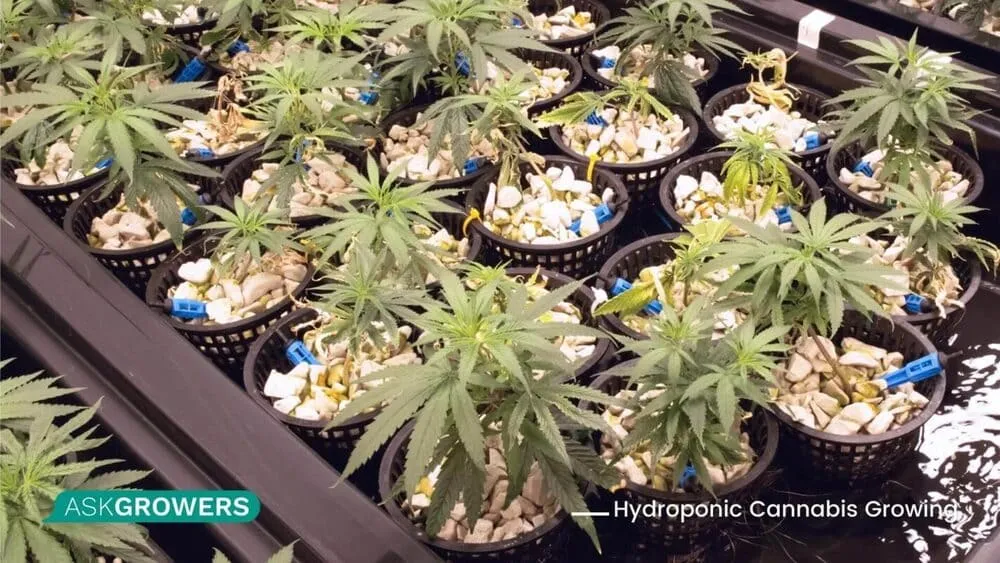As soon as you decide to set up a small (or large) weed garden, you need to consider several growing options from the very start. One of the important choices to make is a growing method: growing your cannabis in soil versus using a hydroponic system. Look through our growing marijuana hydroponics guide to find all the steps and tips for a hassle-free, productive growth experience.
Soil or Hydroponics?
First, let’s dwell a bit on the marijuana hydroponics vs. soil debate. The benefits of using soil include:
- Your weed gets the natural nourishment from regular soil, with a readily available concentration of nutrients.
- Growing weed in the soil does not require any additional investments in equipment or fertilizers.
- Growing in soil is more natural for any plants, cannabis included, so the growth process is gentler.
However, the advantages of cannabis hydroponics systems are also undeniable. Otherwise, they wouldn’t become so popular among professional and lay cannabis growers.
- Hydroponic systems yield 20-30% richer bud harvests than usual soil plantations.
- Plants growing hydroponically have direct access to nutrients and are more nourished.
- Growers can regulate the nutrient concentration and pH of nutrient concentration to achieve optimal outcomes.
One should still remember that hydroponic systems are costly and require considerable investments at the beginning. So, if you want to grow a plant or two for a try, it’s better to opt for natural growing in soil; otherwise, you risk wasting much money.
What to Begin With?
Now, it’s time to explore how to start weed seeds for hydroponics. One of the components of your system is a starter cube, which typically consists of Rockwool. You need to soak it in water for approximately 24 hours before planting. Next, put several seeds in the cube’s hole and wait for them to germinate.

The Hydroponics Setup Process
Here is the hydroponics setup step by step. We consider an example of a drip line hydroponic system as one of the numerous hydroponic options.
- Find a big reservoir where you will put your nutritional solution. It may be as large or small as you need, but its vital components include an air pump, a water pump, and the air stone. The reservoir will connect to your grow table via a drainage line and a drip line, ensuring that water with nutrients comes to and from the plants.
- Another part of the system is a grow table. It should be located a bit higher than the reservoir so that the drainage works well. Choose a table depending on the number of plants you’re planning to grow.
- Plants should be placed into plastic buckets filled with clay pellets. Drill some holes in the buckets’ bottom, so that excess water leaves them and gets drained back to the water reservoir.
As soon as you turn the system on, double-check that there is no standing water in any of its parts and that the air pump works all time to keep the water oxygenated and circulating. The drip line should be connected to the buckets in a way that moisturizes the Rockwool and springs’ roots. Place the plants that have already germinated into the hydroponic setup; it may be either starts or clones that have already started developing into healthy plants.
Nutrients and Hydroponics
When using hydroponic methods for weed growth, you need to consider that without soil, your plants will have no source of nutrients other than you. Thus, you need to add hydroponics cannabis nutrients to the water solution nourishing the plants in the grow tray. There’s no universal nutrient option for weed growth, as your plants will need different nutrients during each stage of their development. But here are some workable tips for nutrient selection and calculating their healthy concentrations.

- You need to supply critical macronutrients (nitrogen, phosphorus, and potassium) and additional nutrients (e.g., calcium, copper, magnesium, etc.) to your plants during the whole growth process.
- The concentration of nutrients depends on the growth stage (e.g., cannabis plants need more nitrogen during vegetation, while the flowering stage requires more phosphorus).
- Experts recommend using liquid nutrient solutions, as they are simpler in administration and minimize the risk of error.
- Proper concentration of nutrients can be determined via EC (electrical conductivity) and pH reading. A healthy EC rating for weed is between 0.8 and 2.0, with adult plants requiring more nutrients than seedlings and springs do.
Discover the Best Seeds for Beginners
Conclusion
Now you’re well-equipped to grow hydroponics weed, and you can perform the entire process correctly to achieve higher yields. With direct access to nutrients and a carefully regulated environment, your cannabis plants are sure to enjoy healthy growth and please you with larger, tighter, and more potent buds. However, keep in mind that weed roots have less support when you use hydroponics. Thus, they are more vulnerable to tipping or breaking. You can avoid this by trellising your plants or regularly pruning fast-growing bushes.


